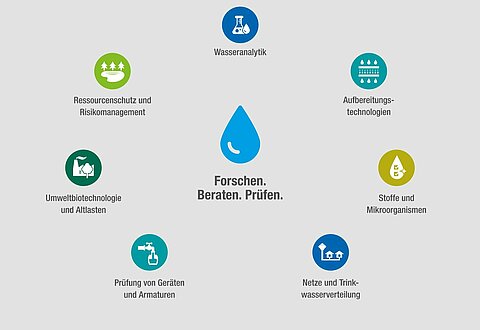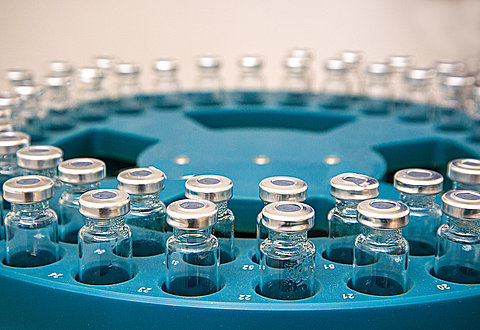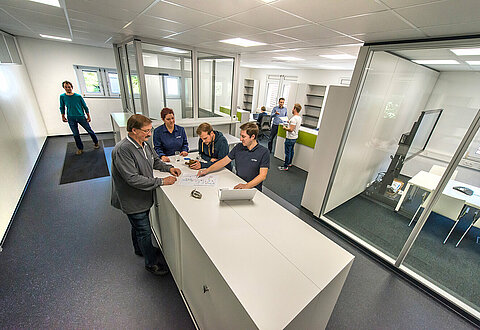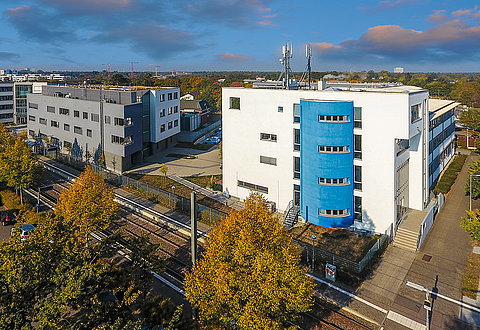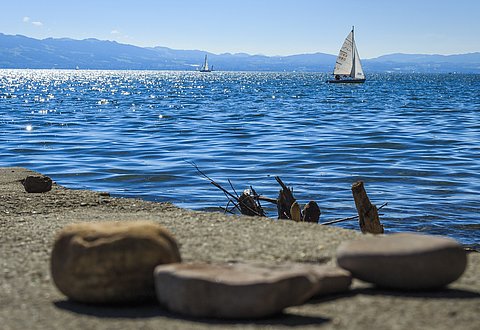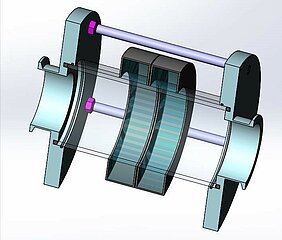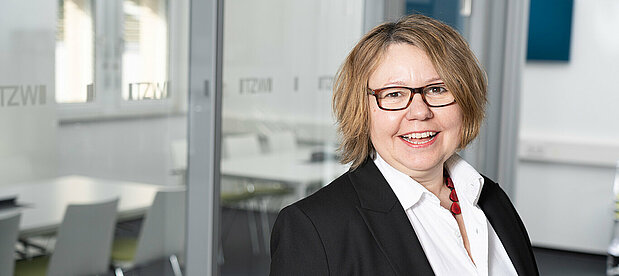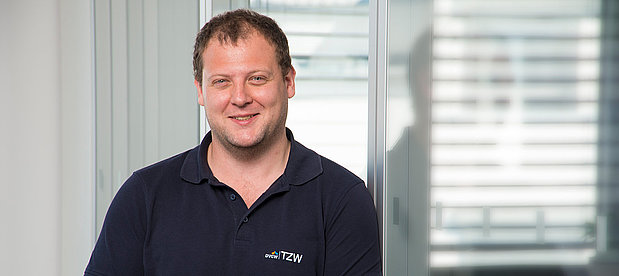UV LEDs (UV light emitting diodes) are already widely used in small devices for point-of-use disinfection. Due to the specific properties of UV LEDs they offer enormous potential for the public water supply. However, this type of application is currently still limited by legal requirements and a lack of technical rules. The development of a corresponding test protocol will enable the use of this innovative technology in the drinking water sector in the future.
Based on previous TZW research projects in the field of UVC LEDs (GENtLED-UV and ELEDWa), the DINoLED project aimed to transfer the results obtained into a test standard for LED-based drinking water disinfection systems.
Together with the industry and research partners, possible monitoring and testing concepts were evaluated using an LED test reactor. For example, various sensor concepts, permissible tolerances during operation and the use of computer-based flow simulation (CFD) were examined in more detail.
The test reactor was installed in the UV test stand at the TZW test center and subjected to intensive biological tests. For example, the disinfection performance of different LED wavelengths, radiation characteristics and microorganisms were compared with each other and the CFD predictions.
A key aspect of the work was the determination of the spectral sensitivity of the microorganism Bacillus subtilis (spores) and MS2 phages in the range from 240 nm to 300 nm, which was carried out by the TZW together with the Physikalisch-Technische Bundesanstalt (PTB) in a specially developed experimental setup with a laser that can be changed in wavelength.
In particular, the use of MS2 phages as an additional test organism in UV disinfection is under discussion due to the results obtained.
As a result of the project, a draft DIN test standard for the type examination of LED-based disinfection devices was presented. Further work is being carried out in the DVGW-DIN joint section NA 119-07-15-02 (PK UV disinfection).
It was also possible to incorporate the results of the spectral sensitivity and investigated test methods into the ongoing standardization process for UV disinfection devices with mercury medium-pressure lamps.
Publications
Schön, K.-H.; Schwarzenberger, T.; Hügler, M.; Eggers, J.: Charakterisierung von LED-basierten UV-Desinfektionsmodulen. Abschlussbericht des TZW im BMBF-Verbundvorhaben „Grundlagenuntersuchungen und Entwicklung eines für den Einsatz im Wasser geeigneten UVC-LED-Desinfektionsmoduls“. Veröffentlichungen aus dem Technologiezentrum Wasser 91, ISSN 1434-5765 (2020)
Schön, K.-H.; Schwarzenberger, T.; Eggers, J.: Bestimmung der Wirksamkeit von UVC-LED Desinfektionsgeräten. Abschlussbericht des TZW im BMBF Verbundvorhaben „Entwicklung UVC-LED basierter Desinfektionstechnologien für die Wasserdesinfektion“ (2021)
Eggers, J.; Schön, K.-H.; Schwarzenberger, T.: UV-LEDs für die Desinfektion in der Wasserversorgung, in DVGW energie | wasser-praxis, 10/2021, 12–16 (2021)


![[Translate to English:] Prüfstelle-Produktprüfung_Teststand Test centre and product testing](/fileadmin/_processed_/0/9/csm_TZW-Karlsruhe_Pruefung_Geraete-Teststand_444204ae51.jpg)
















